"How to move when traveling in Vietnam?" This is quite a common question on travel forums. Experiencing traffic in Vietnam with foreigners is very interesting. Some people even joke that Vietnam's traffic scene is like a unique dance and the traffic participants are truly artists! You will experience many emotions from surprise, nervousness, anxiety, and even excitement when you immersing yourself in that dance.
In Vietnam, you will have to forget your travel habits and accept the differences such as driving on the right instead of the left, people driving vehicles out of habit rather than always respecting the lights and signs, traffic jams occurring frequently in the big cities... However, once you have mastered the basic skills to immerse in Vietnam transportation, you will find that traveling in Vietnam is quite simple and safe.
Here is a list of 20 modes of transportation you can try when traveling in our beautiful country.
Moving from one region to another over a long distance
Vietnam's land strip spans over 1,650 km, divided into 3 regions: North (including Hanoi, Sapa), Central (including Hue, Hoi An), and South (including Saigon, Mekong). There are many ways to move between these regions, but the most convenient for sightseeing is by airplane and train.
1. Airplane
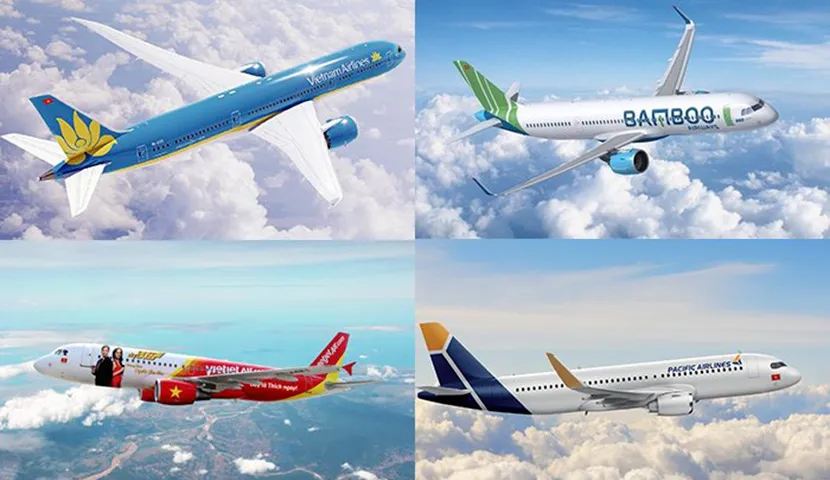
For long distances, taking a flight is always the best choice because of its comfort as well as maximum saving time. Currently, in Vietnam, there are a total of 22 airports, including 10 international airports. Most of Vietnam's important tourist destinations are not too far from the airport, so organizing tours is quite easy.
In the North:
Noi Bai International Airport - Hanoi is about 30 km from Hanoi city center, 45 minutes by car. From here, there are flights to Dien Bien Phu, Dong Hoi, Hue, Da Nang, Buon Me Thuot, Nha Trang, Quy Nhon, Da Lat, Saigon, Can Tho, Phu Quoc, Con Dao.
In the Central:
Da Nang International Airport is 5km from Da Nang city center and 30km from Hoi An Ancient Town. From Da Nang, there are direct flights to Hanoi, Hai Phong, Buon Me Thuot, Da Lat, Nha Trang, and Saigon.
Phu Bai International Airport (Hue) is 20km from Hue city center. The flights from Hue only connect to Hanoi, Hai Phong, HCMC, and Phu Quoc.
In the South:
Tan Son Nhat International Airport (Ho Chi Minh City) is located right in the city, only about 10km from the center of District 1. There are direct flights to Hanoi, Hai Phong, Dong Hoi, Hue, Da Nang, Nha Trang, Buon Me Thuot, Da Lat, Phu Quoc, Con Dao,...
>> See more: Vietnam International Airports List
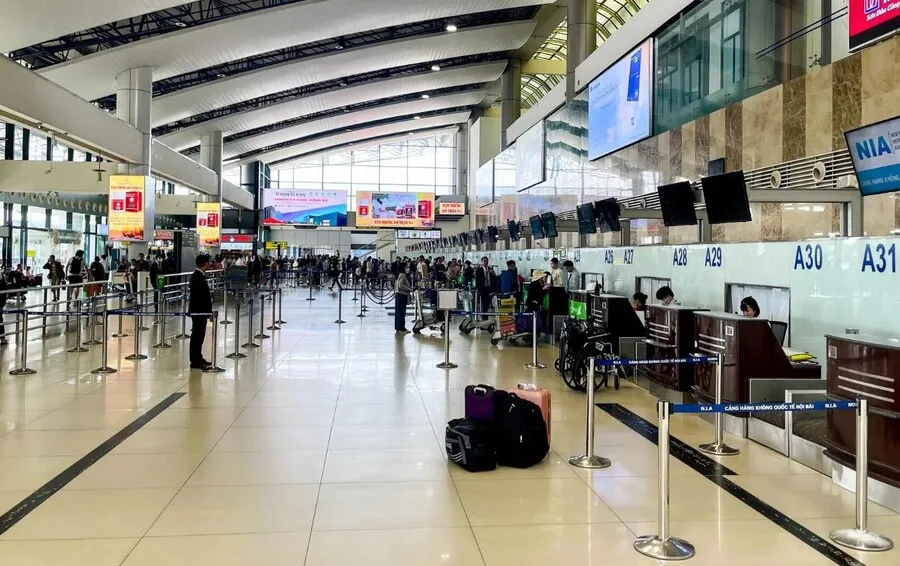
Regarding airlines in Vietnam, there are 6 airlines currently operating: Vietnam Airlines, Bamboo Airways, Vietjet Air, Pacific Airlines, Vietravel Airlines and VASCO.
- Vietnam Airlines: This can be considered one of the giants in the aviation industry in Vietnam, the aircraft quality as well as the service quality are their top priority. The airline operates most domestic routes with many flights every day with many different flight time frames for you to choose from. However, the ticket prices are usually higher than normal. The airline has promotional tickets, but the number is small and sold out very quickly. Passengers often have to book ticket a month in advance.
- Bamboo Airways: It is a new airline but has been praised by millions of customers. The airline is continuing to open new routes, including unexploited flights such as Hanoi - Con Dao, making travel easier. Clients appreciated the best flight service, new aircraft, and punctuality. Especially the prices are very diverse, from cheap to expensive. If you are lucky, you will be able to book a super promotional ticket. The disadvantage is that the number of flights is not many and the flight times of some routes are too late or too early.
- Vietjet Air: Vietjet is Vietnam's leading low-cost airline. Vietjet Air has many routes across the country, second only to Vietnam Airlines. The disadvantage is that the plane is small, and the seats are also smaller, so sometimes they are not very comfortable for Europeans. Flight times are often delayed.
- Pacific Airlines (formerly Jetstar): Along with Vietjet Air, this is also the low-cost domestic airline chosen by many passengers. Pacific Airlines operates fewer domestic flights than the other airlines, while the ticket prices are always at the lowest. The disadvantage is that there are few flights, and they are often delayed or canceled.
- Vietravel Airlines: Launched in December 2020, Vietravel Airlines is the first travel airline in Vietnam. Besides providing flights combined with tourism services and resorts, Vietravel Airlines also operates domestic commercial flights. Currently, the airline is deploying on 7 popular routes to destinations like Hanoi, Ho Chi Minh City, Da Nang, Nha Trang, Hue, Quy Nhon, and Phu Quoc. Flight frequency is from 1 to 2 flights/day. The advantage of the airline is that the air tickets are quite cheap when combined with travel and relaxation. The airline's disadvantage is that there are few flight options during the day.
- VASCO: This airline operates mainly in the southern region of Vietnam, operating flights from Vung Tau to the islands.
When booking flight tickets, you should pay attention to the distance from the airport to your accommodation and if the flight time is during peak hours or on holidays. Because at that time, there are always traffic jams that make it very difficult to move, especially in Hanoi and Saigon. You then can estimate the time to go to the airport. The time for domestic flights in Vietnam ranges from 50 minutes to 2 hours. The distance from the city center to the airport is about 10 - 35 km, which takes an average of 0.5 - 1 hour by taxi. You need to be at the airport 1 hour in advance to check in the domestic flight. For international flights, you should arrive 2 hours in advance.
2. Train
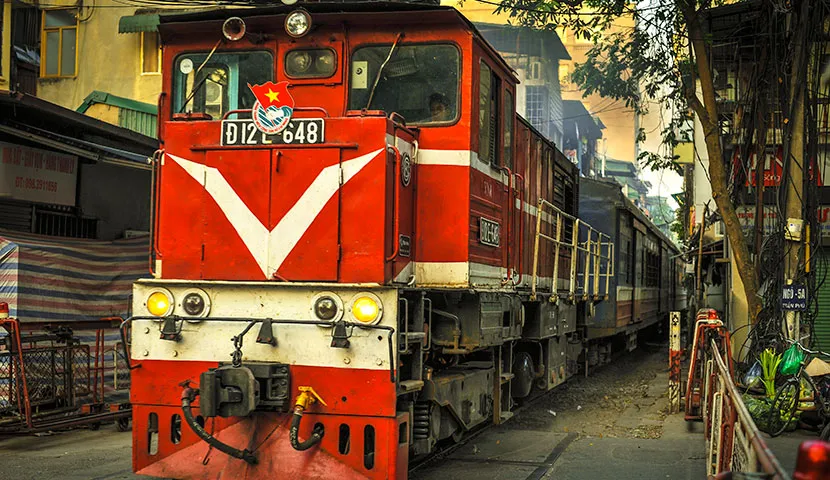
Transfer by train in Vietnam
The train is a quite efficient, safe, and economical choice for your trip to Vietnam. Instead of taking an expensive plane, you can take the train at a more reasonable price. Moreover, taking a night train will save an extra night in a hotel.
Vietnam has a 1,726 km long railway system running from north to south, honored in the top 10 most impressive railway in the world, along with names such as California Zephyr Railway, USA, Perurail Titicaca, Peru, Beijing - Tibet, China...
Some popular train routes when traveling to Vietnam:
- Train from Hanoi to Lao Cai
This is the most effective means of transportation if you want to travel to Sapa for 2-3 days. Take advantage of overnight on a train, you will have a full day exploring Sapa.
The length of the Hanoi - Lao Cai railway is 300 km, and it takes about 9 hours by train. From Lao Cai, you can continue to take the bus to Sapa or Bac Ha according to your tour schedule.
It is advisable to book train carriages for tourists such as Livitrans, Sapaly Express, Violette Express, and Orient Express, ...
To catch the train to Lao Cai from Hanoi, you start at gate 1 in Tran Quy Cap Street instead of the station gate at 120 Le Duan. Please be careful with your driver about this when picking up and dropping off so you won't waste time finding each other.
Schedule:
From Hanoi to Lao Cai: Start at 09.00 pm and arrive in Lao Cai at 6.00 am the next day
From Lao Cai to Hanoi: Start at 08.00 pm and arrive in Hanoi at 5.00 am the next day
Price:
About 400.000 VND/pax/one way ( Share 4 bed AC Cabin)
Where to book the Hanoi - Lao Cai train ticket?
You should book through reputable travel companies, they have contracts to guarantee your journey, and the contract price is also better than the direct price.
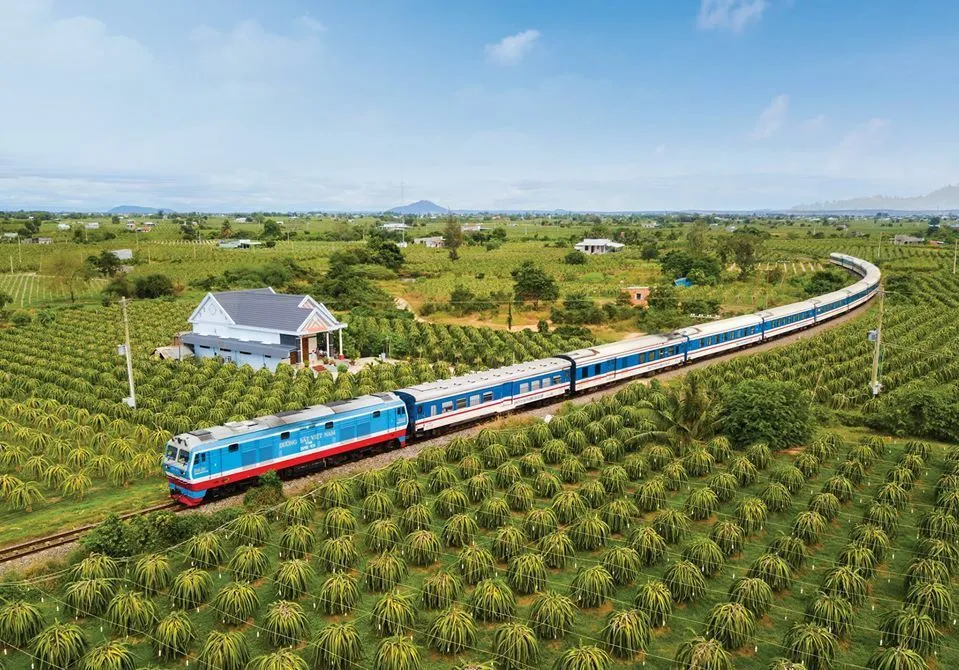
- Train from Hanoi to Hue
The distance from Hanoi station to Hue station is 700 km and you will have about 12-hour experience on the train.
Some trains for tourists are Livitrans, Violette Express, SE1, SE3, and SE19. SE1 and SE3 of Livitrans and Violette Express are high-quality carriages that are more comfortable, more beautiful, and more expensive.
If you combine Ninh Binh, you can take a train from Ninh Binh station to Hue without having to return to Hanoi.
Schedule:
SE 1: Hanoi station at 22.10 to Hue station at 10.50
SE 3: Hanoi station at 19.30 to Ninh Binh station at 21.50 to Hue station at 8.30
SE19: Hanoi station at 21.10 to Ninh Binh station at 22.30 to Hue station at 9.30
Price:
For regular trains SE1, SE3, and SE19: ticket prices range from 815.000 – 1.056.000 VND / person (4-bed AC cabin).
The price of high-quality carriages such as Livitrans and Violette Express is slightly higher, from 1.150.000 VND/person (4-bed cabin with air conditioning).
During the peak seasons as summer and Tet, prices can be higher and often fully booked.
Where to book Hanoi - Hue train tickets?
You can book directly at the official website of Vietnam Railway dsvn.vn or through a travel company.
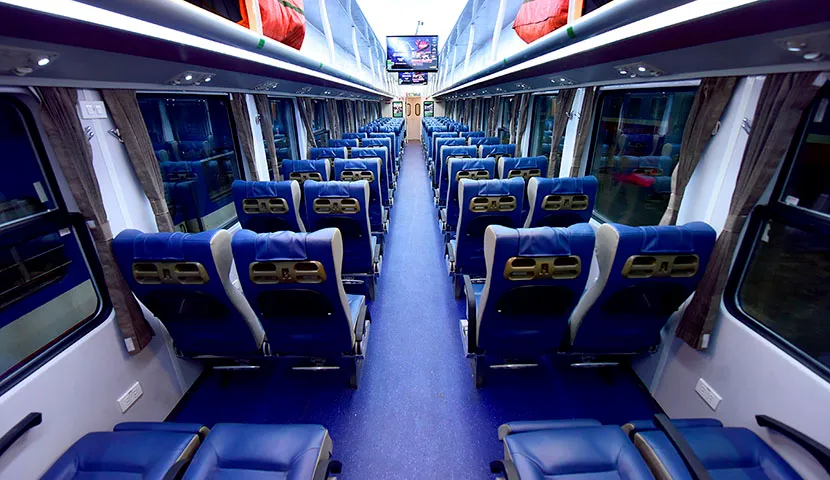
Notes:
The trains in Vietnam shake and are a bit noisy during the journey, making it difficult to sleep on the train. However, this is still a pretty interesting travel experience. In case you have trouble sleeping or have back pain, it's best to take a flight or car to stay healthy for the rest of the trip.
If you have enough budget, you can request bathroom and breakfast when arrive in Hue after a night sleeping on the train to rest before starting the tour.
Otherwise, enjoy breakfast in a local restaurant, Hue has many delicious dishes for you to enjoy at very affordable prices (30.000 – 50.000 VND/person, only about 1.5 - 2 USD). Your hotel room is ready at 2 pm.
In addition to two popular train routes mentioned above, you can also take the train from Hue or Da Nang to Saigon, however, this trip is quite long (about 20 hours) so it is not recommended.
>> See more:Vietnam Sleeper Train: Things to Know Before Your Journey
Moving from one attraction to another over a short distance
When it comes to traveling from one destination to another within a particular area or region, opting for tours with transfer by car is often the most convenient and comfortable choice. You can either book a full-service tour package from a reliable tour company or save costs by taking local buses or open buses.
3. Car
Foreign tourists are not allowed to rent self-driving cars in Vietnam. However, if you're a foreigner residing and working in Vietnam and have a valid driving license, you can rent a self-driving car. Alternatively, you can rent a car with a private driver through a local travel agency if you want to have a private trip with your loved ones.
The local driver has good knowledge of the roads, beautiful sights, and cheap places to eat. However, it's important to note that most drivers in Vietnam do not speak a foreign language, and can only communicate in a few simple words.
If you plan to drive through the Northern mountainous roads of Vietnam, it is recommended to hire a tour guide. This will help you to learn about the different ethnicities in Vietnam, interact with the locals, and get a better understanding of their customs and way of life. However, if you prefer to travel alone, you can still hire a driver who can take you around. Vietnamese people are known for being friendly and welcoming, so you don't have to worry about being alone. Just make sure you choose a good driver and you're good to go.
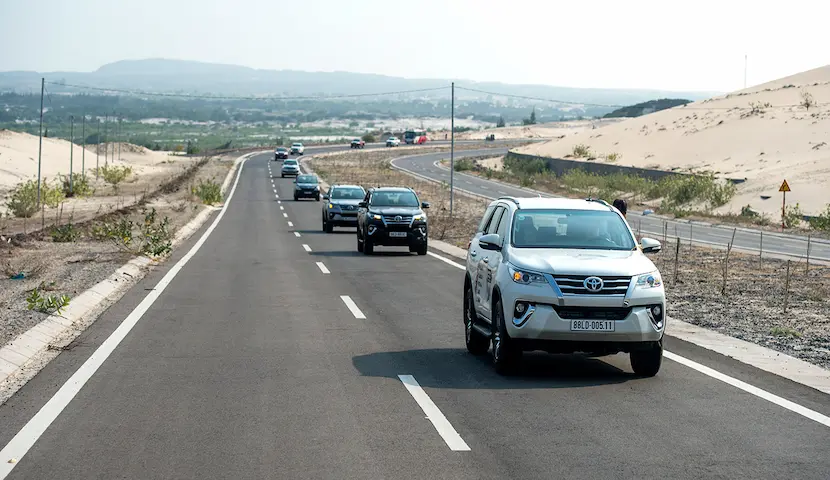
>> See more: Renting A Car in Vietnam With Driver
4. Local Bus
The local bus system in Vietnam is highly varied. In the past, it was challenging to book a bus to travel to the provinces. However, with the development of technology, now you can easily book a car. You no longer need to go to the bus station; all you need is a smartphone with an internet connection.
Regular bus
Some buses have air-conditioning, while others do not. However, all buses are relatively small, which can make transfers uncomfortable. Buses usually depart only when they are full and may stop along the way to pick up and drop off passengers. You can purchase tickets at the bus station shortly before departure or simply flag down a passing bus and board it on the spot.
Bus stations are typically located on the outskirts of the city, which means an additional taxi fee is required to get there.
Here are the primary bus stations located in Hanoi, Hue, Danang, and Saigon:
- In Hanoi: Giap Bat bus station, My Dinh bus station
- In Hue: Hue bus station
- In Da Nang: Da Nang bus station
- In Saigon: Mien Dong bus station
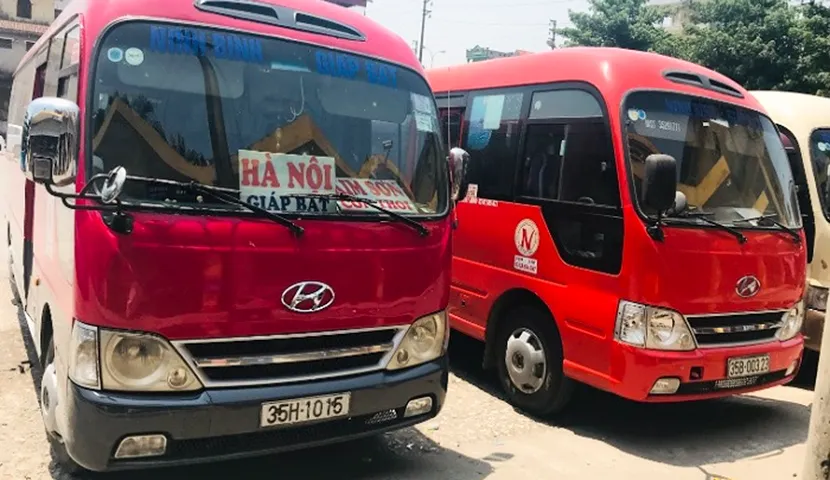
Limousine D Car
There is a new type of bus that has gained popularity among both domestic and foreign tourists. This is the D-car Limousine bus, which is known for being more expensive but offering bigger and more comfortable seats. These buses have fixed departure times and do not make any stops along the way, resulting in shorter travel times. They typically have 9 to 12 seats and are not operated from the bus station but have separate parking spots in the city. Some of these buses can also pick up and drop off passengers at their hotels.
You have the option to book a Limousine D car ticket a few days in advance or just a few hours before the departure time. Please note that cancellations must be made at least 2 hours prior to the scheduled departure time. To book your ticket, you can do so easily online at vexere.com or directly through the bus companies.
The small size of local buses makes them unsuitable for carrying large luggage. As a result, they are best suited for short trips with minimal luggage.

Inside a limousine Dcar
5. Open Bus
This type of bus is a great option for tourists on a limited budget. Sinh Tourist, Mailing Express, and Phuong Trang are some recommended choices for long-distance travel. These buses come equipped with 2-storey and 3-row seats, and you can easily book them to visit popular tourist destinations from North to South, such as Hue-Hoi An, Nha Trang-Da Lat, Da Lat-Saigon, and Saigon-Mui Ne.
Bus offices can be found in most tourist destinations from North to South of Vietnam. You can purchase open tour tickets that are valid for one year to travel between major cities from Hanoi to Saigon. Keep in mind that meals are not included in the ticket price, but the bus will make stops at partner restaurants along the way for you to have your own meal. Some of the most popular routes include Hue to Hoi An, Nha Trang to Da Lat, Da Lat to Saigon, and Saigon to Mui Ne.
If you require additional information regarding routes, itineraries, or booking tickets, you can find them by visiting the following website or contacting the appropriate authority.
- The Sinh Tourist Bus Operator: thesinhtourist.vn
- Mailinh Express: mailinhexpress.vn
- Phuong Trang Bus Operator: futabus.vn
Moving around the scenic locations
Exploring Vietnam using various modes of transportation can provide you with a memorable experience.
6. Walking
Walking is a great way to experience the place you are staying in, discover new things, and meet new people. If you have some free time and aren't in a rush, take a stroll through the small streets and alleys of cities like Hanoi, Hue, Hoi An, and Saigon. In addition to the typical hustle and bustle of the city, you'll find many peaceful corners. Ancient houses, old walls, street tea shops, street vendors, and more will create unforgettable images in your mind.

Enjoy walking in Vietnam's attractions
If you want to explore the serene beauty of Vietnam, you can take a stroll through the narrow streets of quaint villages like Ninh Binh, Mai Chau, Sapa, Ha Giang, Ben Tre, and more. You will be surrounded by breathtaking natural landscapes, including lush rice fields and magnificent mountains, and you'll get a chance to meet the warm and amicable locals. Moreover, the pristine rivers flowing through these villages add to the charm of your journey.
When walking in Vietnam, it's important to always keep to the right side of the road. You may encounter situations where the sidewalk is being used for shops or parking. Unfortunately, pedestrian markings are not always respected, and not all roads have them. It's worth noting that not all motorbikes will stop at a red light, so some drivers may still be moving at a fairly fast speed. However, don't worry, you can still cross the road safely by observing the traffic closely. Just be vigilant and you'll be fine.
Be cautious yet firm while crossing the street to avoid getting hit by other vehicles. You can also follow a local when they cross the street. It might require a bit of courage on your part, but you'll get used to it after a few attempts.
>> See more: Half-Day Walking Tour in Hanoi
7. Bicycle
Cycling in Vietnamese villages or on coastal roads is a popular activity among tourists. The best places for cycling are Ninh Binh, Hoi An, and the Mekong Delta region, which offer peaceful scenery, flat roads, easy access, and less traffic.
For those who prefer more challenging activities, the Northern mountainous area is perfect for cycling. There are steep trails with many interesting challenges to conquer.
Bicycles can be easily rented at affordable prices from most places.

8. Cyclo and trishaw
Trishaw
Another form of cyclo that is only used in Chau Doc is called Xe Loi ( trishaw). It is a trailer pulled by a bicycle that can carry 2 people. You will use a rickshaw for the pick-ups between the hotel and the high-speed pier to continue your trip to Phnom Penh - Cambodia.
Cyclo
Friendly, cheap, pollution-free (no motor, no dust), cyclo is a fairly typical means of transport in Vietnam to visit in the city. Vietnam Cyclo has been registered by Boredpanda in the list of the most unique traffic types in the world.
With cyclo, you can explore 36 streets of Hanoi, Hue city, the ancient town of Hoi An or bustling small streets in Saigon.
It is advisable to exchange specific prices with the driver before going. Normally, the fee will be calculated by hour per person. About 100.000 – 150.000 VND/1 hour/person.
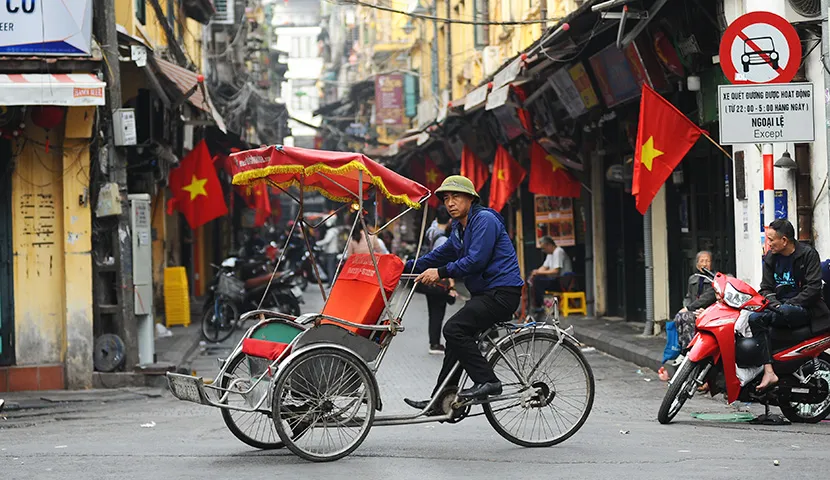
A cyclo in Hanoi - Vietnam
9. Motorbike and Motorcycle taxi
Two-wheeled vehicles are most used by local people in the city as well as in the countryside. Do not hesitate to experience this vehicle during your trip to Vietnam.
9.1. Motorbike
Driving and renting motorbikes are prohibited for foreigners, except for those living in Vietnam and holding a Vietnamese driver's license. Traffic in Vietnam is very complicated and has many potential risks. Insurance is not valid in case of an accident without a Vietnamese driver's license, so you will have to pay all fees. However, if you want to drive like a local yourself, you can easily find one at a motorbike rental company or a hotel (semi-automatic motorbike, scooter).
Adventurous tourists can also take a tour throughout Vietnam by motorbike.
- Motorbike rental fee: 200.000 VND/day (gasoline not included)
- Rental motorbike at: flamingotravel.com.vn
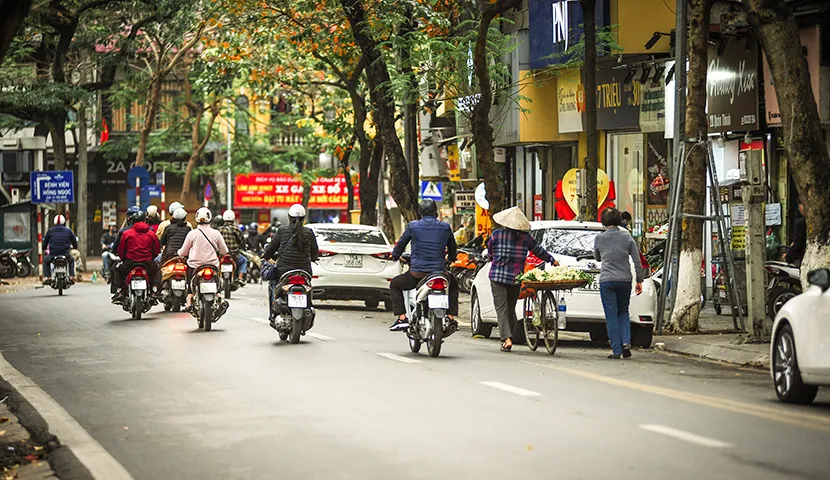
Motorbike in Vietnam
9.2. Motorcycle taxi
This is a form of transportation with a driver. Each motorbike can only carry 1 person and a child under 6 years old. According to Vietnamese law, when riding a motorbike, both the driver and the passenger have to wear helmets. Tourists love this mean of transport because it helps them feel the authentic lifestyle of local people as they squeeze through the crowds on the street or into small alleys inaccessible to cars.
In Vietnam, there are 3 main types of motorbike taxis: regular motorbike taxis, technology motorbike taxis and tourist motorbike taxis.
- Regular Motorbike Taxi
In cities, it is not difficult for you to find a motorbike taxi waiting for passengers on the sidewalk, right next to an intersection or bus station. The drivers are friendly and kind people but cannot speak foreign languages so they are usually only suitable for short trips. You need to have the specific address of the destination and ask the price carefully before getting on the motorbike.
- Technology Motorbike Taxi
The development of technology helps us a lot in all aspects of life. You only need a smartphone with an internet connection and install a few transportation applications like Grab, Be, and Xanh SM. This type of transportation quickly became popular in Vietnam because its price is more affordable than traditional motorbike taxis, it is clear about the road as well as ticket prices before booking, you can check the vehicle's status, waiting time, and driver rating.
Technology motorbike taxis are available in big cities such as Hanoi, Saigon, Hai Phong, Hue, Da Nang, Khanh Hoa, Vung Tau, Can Tho...
- Motorbike Taxi Tour
Some tourists cannot walk much or cycle, motorbike taxis are the perfect choice to help them still have a complete tour, still travel on almost all roads, and still have the opportunity to meet local people along the way. This is the means of transportation to the place of interest or accommodation, usually in the mountains or rural areas. The price is around 150,000 - 200,000 VND/1-hour for a motorbike tour.
In the city, the type of motorbike tour is more professional, organized in half-day or full-day tours. Tourists are very interested in this way of sightseeing because they feel comfortable, happy, and closer to the Vietnamese people. It may be a tour to explore the craft villages or enjoy street food... The drivers are enthusiastic, speak English, and are very professional. Prices are usually calculated according to the package of the tour, usually from 40 USD/pax.

>> See more: Vespa Tour Hanoi - Explore Hanoian Life After Dark
10. Xe Loi
Xe Loi is not a popular means of transportation in Vietnam. Only in the Mekong River Delta, do people use Xe Loi to take visitors around. Simply put, it is a two-wheel vehicle pulled by a bicycle. Sitting on a Xe Loi brings a fun experience for a short distance from one attraction to another.
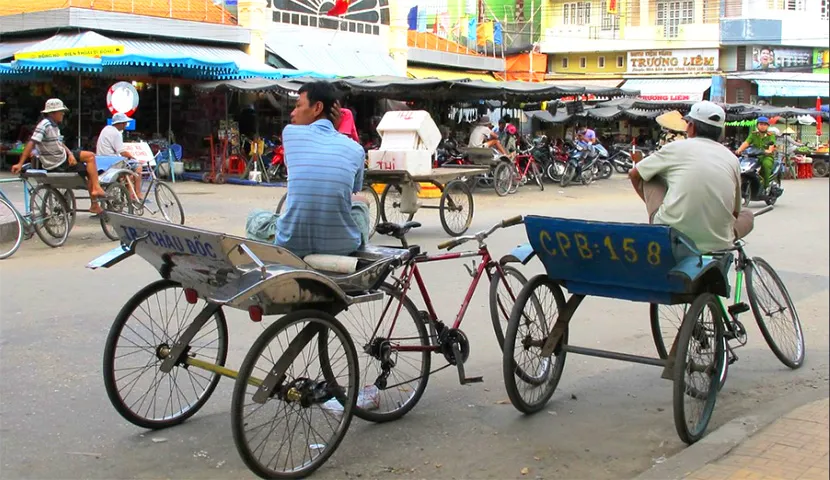
Xe Loi waiting for passengers in Chau Doc
11. Taxi
Taxis are a very popular, fast, easy, and convenient means of transportation. You can call a taxi 24/7, anytime you need it. You can ask the hotel receptionist for a taxi because most of Vietnamese taxi drivers do not speak foreign languages.
There are two types of taxis on the app: regular taxis and taxis.
Regular taxis
You can ask the hotel staff to call a taxi or take a taxi along the way. You should ask in advance how much the ticket price is for the route you plan to go to avoid being charged higher than normal. The vehicle must have a clear meter and price range.
You should take taxi from reputable and reliable brands such as Mai Linh, Taxi Group, G7, Vinasun...
The average fare is about 10,000 - 13,000 VND / km. This price and does not change at all times of the day.
Taxis on the app
Booking taxis through mobile app are now widely used by many people thanks to the price transparency and many promotions for users. After booking, you will receive information about the driver and vehicle type, and the license plate number. This amount is also displayed right on the application, you just need to pay the correct amount and enjoy the ride with peace of mind.
The average price is about 9,000 VND/km. During peak hours (11:00 am - 1:00 pm, 6:00 pm - 8:00 pm) or at night (11:00 pm - 5:00 am), the fare will be higher. During these times, there will be no significant difference from regular taxis.
The disadvantage of booking taxis on the application is that it is only available in big cities such as Hanoi, Saigon, Da Nang, Quang Ninh, Khanh Hoa, Da Lat, Can Tho, Phu Quoc, etc... Meanwhile, regular taxis are available across the country.
There are currently some technology taxi companies operating in Vietnam like Grab, Be, Xanh Sm. You must download the app to your phone and have an internet connection to book a taxi.
12. Electric Car
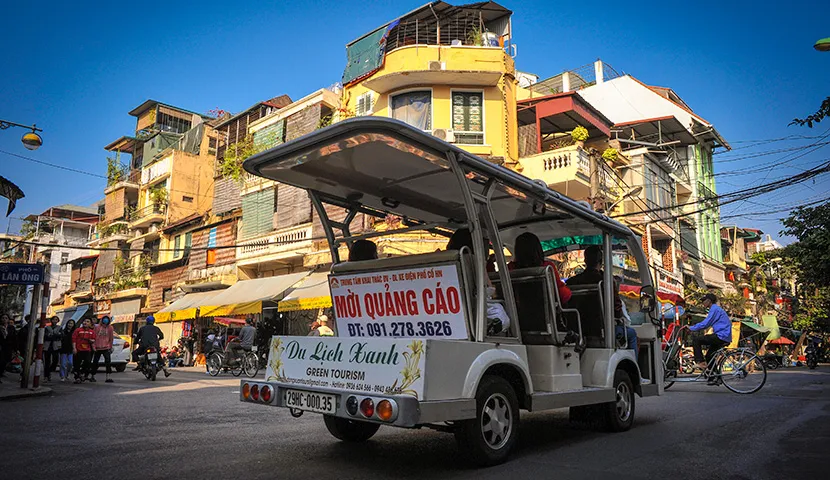
Electric car in Hanoi, Vietnam
Electric vehicles have become a popular means of transportation in Vietnam's tourism industry. They are particularly suitable for promoting sustainable tourism and preserving the environment.
Electric cars are commonly used in eco-tourism and scenic areas like Hanoi, and tourist attractions such as Bai Dinh, Trang An, Ha Long, and Cat Ba.
Resorts with large areas also utilize electric cars to help guests move around the premises, such as from their rooms to the restaurant, swimming pool, or beach, all for free.
13. City Bus
Another affordable option for transportation in big cities like Hanoi, Saigon, Hue, and Da Nang is the bus system. You can take a bus to visit the city's attractions. However, it's best to avoid taking the bus during rush hour since it can be crowded, and travel time may be longer due to traffic congestion. This is also an interesting way to experience the daily life of Vietnamese people.
In Hanoi and Ho Chi Minh City, you can download the BusMap or VinBus app on your phone.
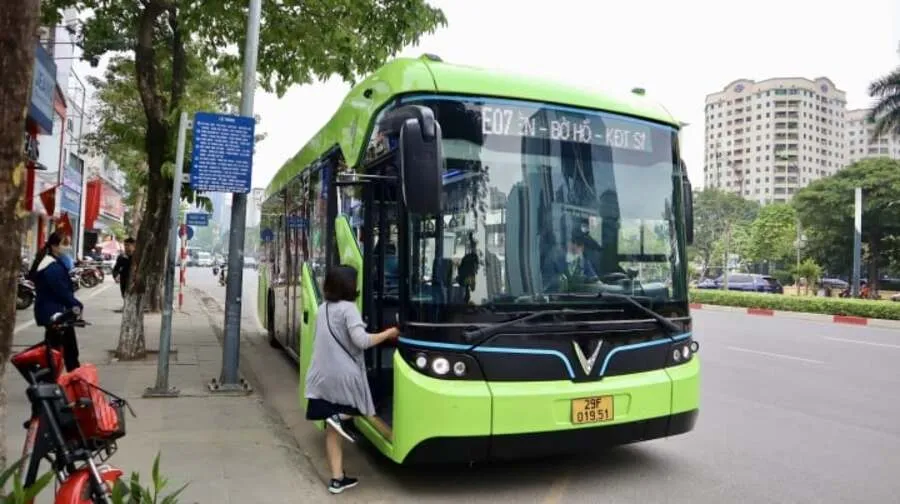
14. Hop-on Hop-off Bus
Hop on - Hop off is a flexible and convenient tour that allows you to travel and visit highlights in Hanoi and Saigon by double-decker bus. This tour helps you save money and explore the city at your own pace. You can get on and off the bus at any bus stop during the trip. On the bus, there are local guides, a city map, drinking water, a conical hat, raincoats, headphones, wifi, and automatic voice guidance in English, Chinese, French, Korean, and Vietnamese.
- Hop-on Hop-off Hanoi
The Hop-on Hop-off Hanoi Bus service covers 13 different stops and passes through 20 popular attractions in the city. Some of the notable attractions include Dong Kinh Nghia Thuc Square, Hoan Kiem Lake, the Cathedral, Hanoi Flagpole, Ho Chi Minh Mausoleum, Quan Thanh Temple, Tran Quoc Pagoda, Cua Bac Church, Thang Long Citadel, Temple of Literature, Hoa Lo Prison, Vietnamese Women's Museum, Hanoi Opera House, and Hanoi Post Office.
Buses depart continuously every 30 minutes from 9:00 am to 5:30 pm every day.
The ticket price is 450.000 VND/per person
Website: Hop-on Hop-off Vietnam
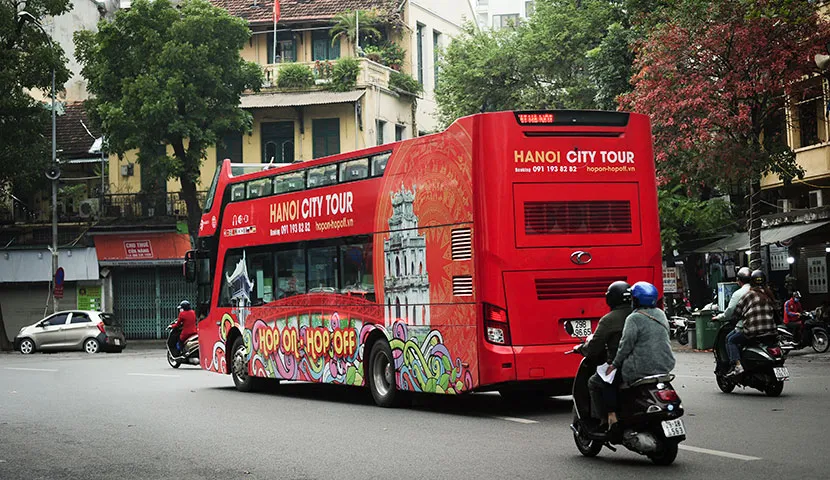
Hop on Hop off bus in Hanoi city
- Hop-on Hop-off Saigon
Hop-on Hop-off Saigon includes 10 stops, passing through various popular destinations in the city. The stops include Notre Dame Cathedral - Notre Dame statue, Saigon Central Post Office, Independence Palace, War Remnants Museum, Bui Vien Walking Street, Museum Fine Arts, Bitexco Tower, Ben Thanh Market, and Nguyen Hue Walking Street.
Buses depart continuously every 30 minutes from 9:00 am to 10:30 pm every day.
Ticket price is from 150.000 VND/pax
Website: Hop-on Hop-off Ho Chi Minh Vietnam
15. Elevated Railway
The concept of an elevated railway in Hanoi emerged as a solution to the city's growing traffic congestion and the need for a more efficient mode of transportation. After years of planning and development, the elevated railway was put into use in 2021, marking a significant milestone in Vietnam's efforts to modernize its infrastructure and improve urban mobility.
The two ends of the railways are Cat Linh and Ha Dong with 10 stations in between. Maximum speed 80km/h, while operating speed is 35km/h.
You can buy a ticket from ticket counters, ticket machines, or online platforms. Many stations are equipped with self-service ticket machines where you can purchase tickets using cash or card. Follow the on-screen prompts to select your destination and fare type. The price is based on the station you'll get off.

16. Cable Car
The cable car is a popular mode of transportation among tourists to reach scenic spots located in hills and mountains that are not accessible via other means of transportation. Some of the famous cable car resorts include Fansipan in Sapa, Huong Pagoda in Hanoi, Ba Na Hills in Da Nang, Robin Hill in Da Lat, and recently, the cable car over the sea in Ha Long, Cat Ba Island and Phu Quoc Island.
While sitting in the cable car, one can admire the beautiful natural scenery, including vast forests and deep blue seas.
However, the disadvantage of using this mode of transportation is the long waiting time, particularly during the tourist season for domestic tourists.
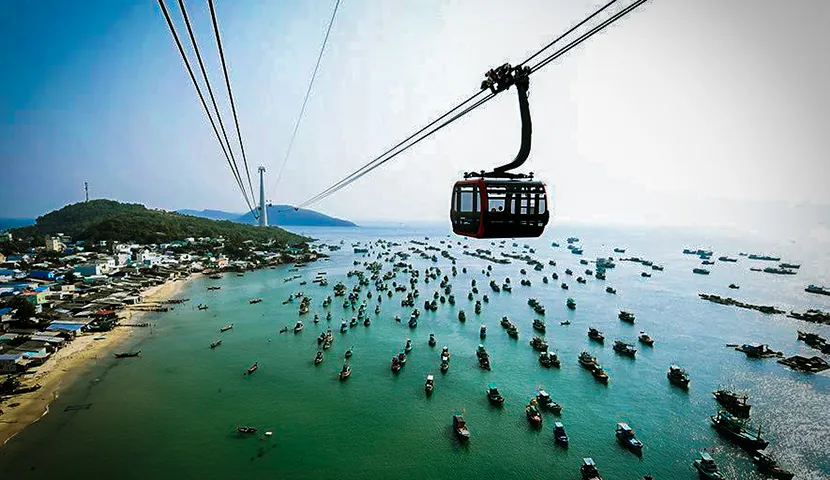
Cable car in Phu Quoc Island
>> See more: Day Trip in Phu Quoc Island by Cable Car & Snorkeling
17. Helicopter
Helicopter tours in Vietnam are becoming increasingly popular among tourists, despite their high price. Various well-known destinations such as Ha Long, Ninh Binh, Sa Pa, and Vung Tau - Con Dao now offer the experience. Each tour lasts from 8 to 45 minutes but guarantees unforgettable moments for your Vietnam trip. From the bird's-eye view, you can admire the breathtaking beauty of nature in all its magnificence. This unique discovery experience is a must-try for any traveler visiting Vietnam.
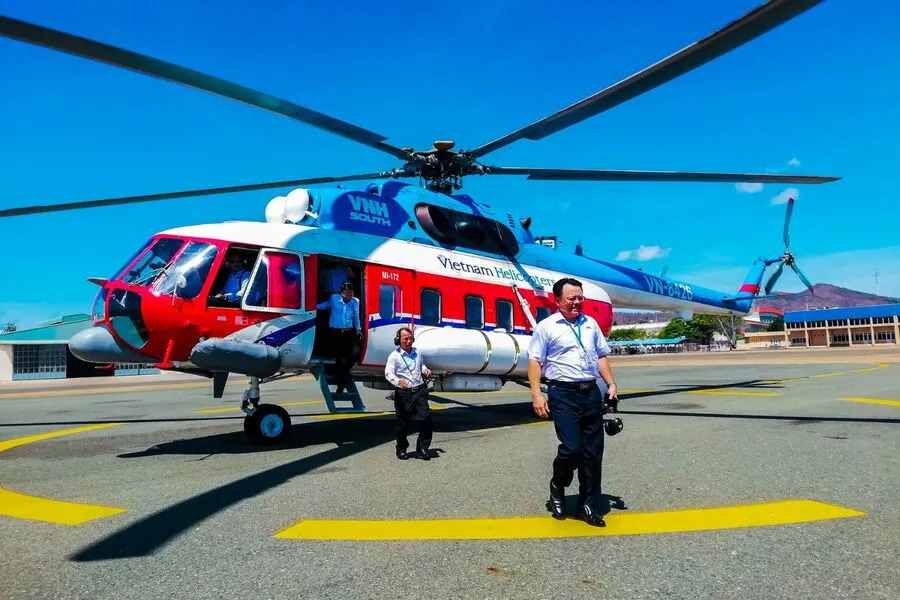
Waterway
Vietnam has a diverse waterway transport network, with a dense river system and a coastline that stretches over 3000 km from North to South. Experiencing various types of waterway transport is an essential activity for anyone looking to discover Vietnam.
18. Overnight Cruises
Exploring Ha Long Bay (or Bai Tu Long Bay, Lan Ha Bay) on a cruise that provides full amenities, like a miniature hotel, is considered one of the most important highlights of a trip to Vietnam. In the past, most of the cruises were made of wood, but to ensure the safety of visitors, the new cruises are now made of iron and come with more comfortable and modern equipment. The cabins on the ships are nicer and have open windows, which allows you to enjoy the beautiful view right from your room without having to go on the deck.
>> See more: Top-rated Halong Bay Private Cruise - Small Charter Boat
Additionally, you have the option to explore the Mekong Delta by taking an overnight cruise.
>> See more: The 7 Best Mekong River Cruises in Vietnam and Cambodia

Overnight cruise in Halong Bay
19. Boat
Tourists often choose to take a rowing boat tour while visiting tourist destinations like Tam Coc in Ninh Binh, the Bay Mau Coconut Forest in Hoi An, or the Mekong Delta. One of the most impressive sights during such tours is the round basket boat made of bamboo. This activity provides a peaceful experience as there is no noisy engine or gasoline smell, only serene nature with the sound of paddles hitting the clear blue water.
>> See more: What to Know About Basket Boat Ride in Hoi An, Vietnam
20. Kayaking

Kayaking in Halong Bay
Kayaking is becoming increasingly popular for tourists in Vietnam, offering an opportunity to enjoy physical activity while exploring the country's rivers, lakes, and seas. Kayaking allows visitors to admire the natural beauty of Vietnam, including clear blue waters and cool air. Kayaks come in various sizes and types, but most have 1-2 seats and a deck that covers the legs, making it a safe activity even for children. Some of the best kayaking spots in Vietnam include Halong Bay, Bai Tu Long Bay, Lan Ha Bay, Tu San Alley (Nho Que - Ha Giang), Song Chay – Dark Cave (Quang Binh), Tuyen Lam Lake (Da Lat), and Bai Sao (Phu Quoc).
>> See more: Kayaking in Halong Bay - A Fascinating Experience to Try
21. Ferry and Speedboat
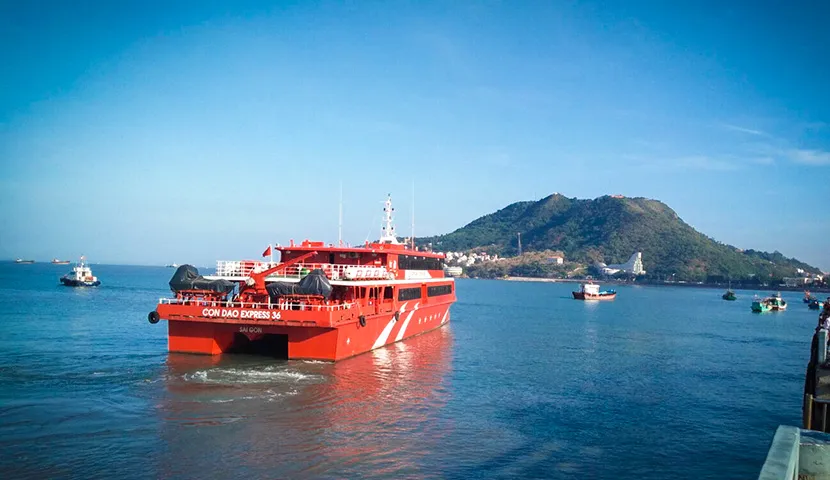
Hydrofoil to Con Dao island
Ferries and high-speed boats are popular means of transportation in rivers and coastal areas of Vietnam. Ferries can carry both vehicles and passengers, while high-speed boats are designed for passenger transport only. Some popular ferry routes for tourists include the Got ferry and the Tuan Chau ferry. Meanwhile, high-speed boat routes include Hai Phong - Cat Ba, Hoi An - Cu Lao Cham, Rach Gia - Phu Quoc, and Ha Tien - Phu Quoc, among others.
In a country as diverse and dynamic as Vietnam, the modes of transportation reflect its rich culture and landscapes. Exploring Vietnam's 21 modes of transportation unveils not just a means of getting from point A to B but a journey through its history as a developing Asian country. Comment down below if you found your favorite mode of transportation in Vietnam. Travel well, adventurers.
See more:








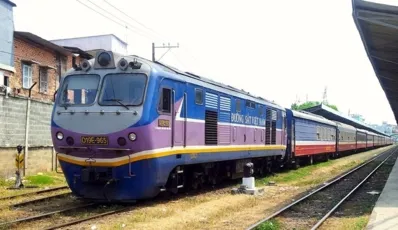
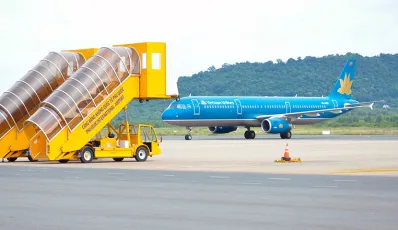
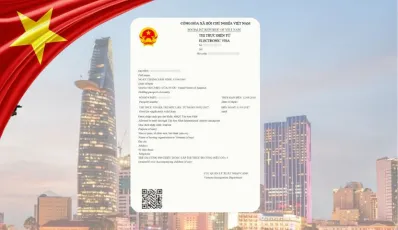
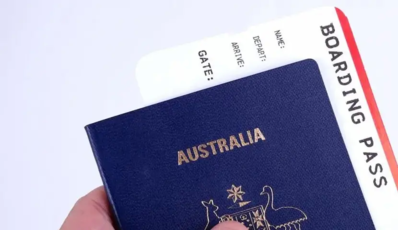
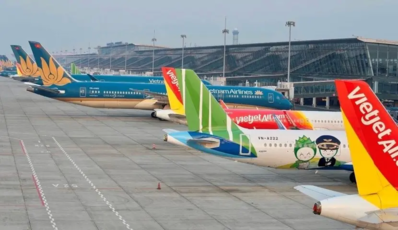


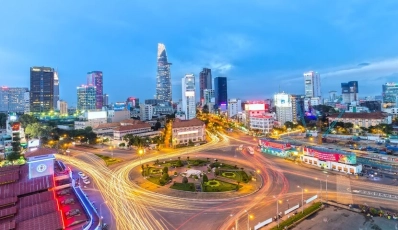
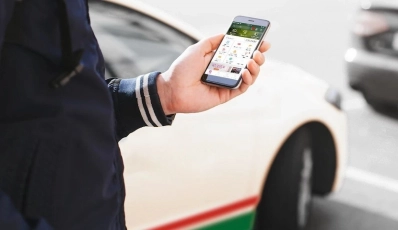

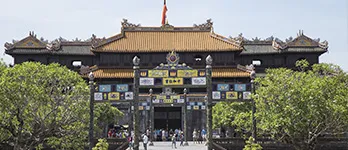
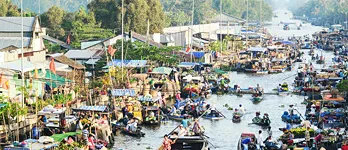

 TRAVELERS' CHOICE 2025
TRAVELERS' CHOICE 2025 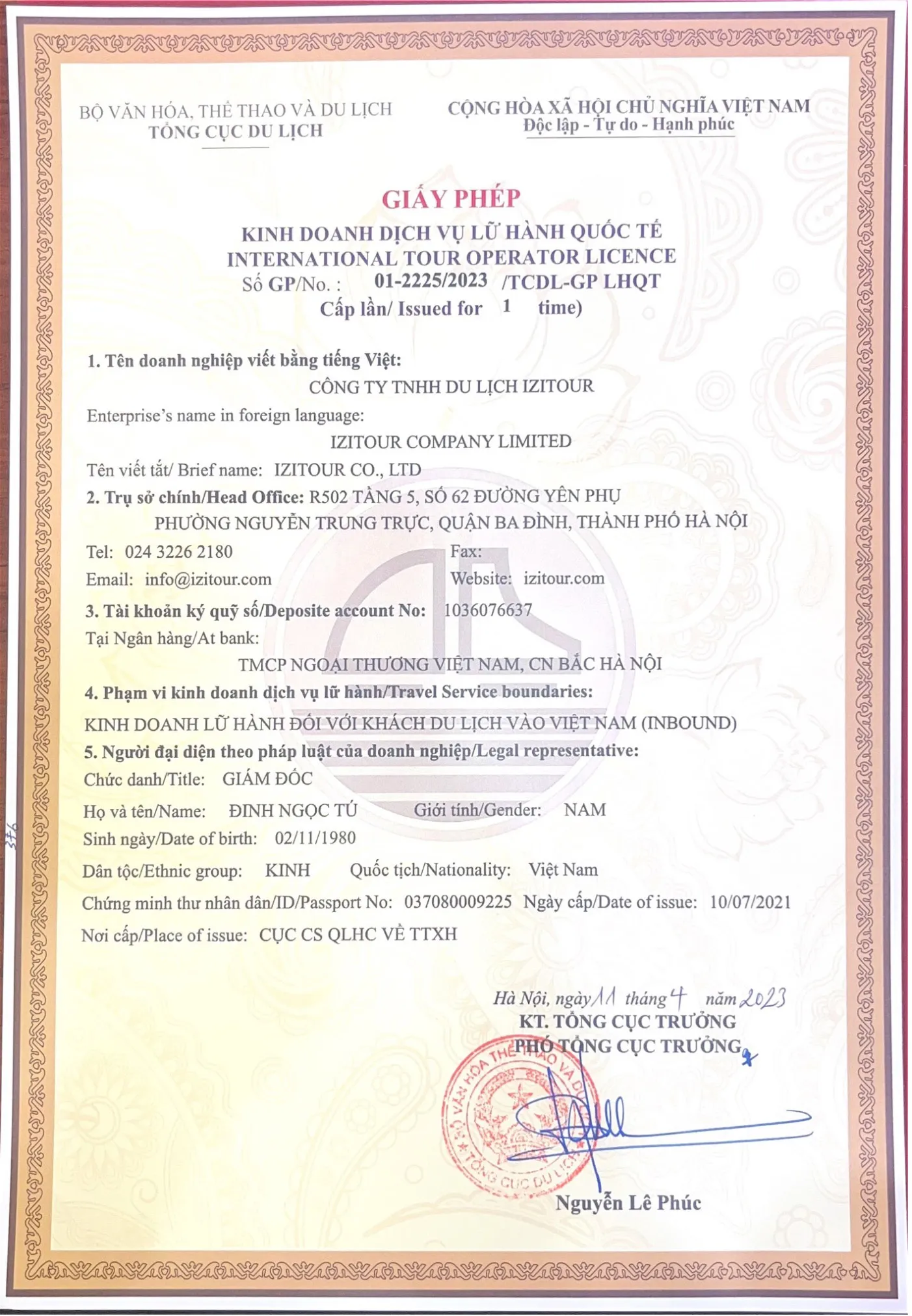



01 Comment
Uzbekistan
Our family is planning to visit Laos, Cambodia and Vietnam that we find your travel guide useful to us. Thank you for your sharing.
Write Reply